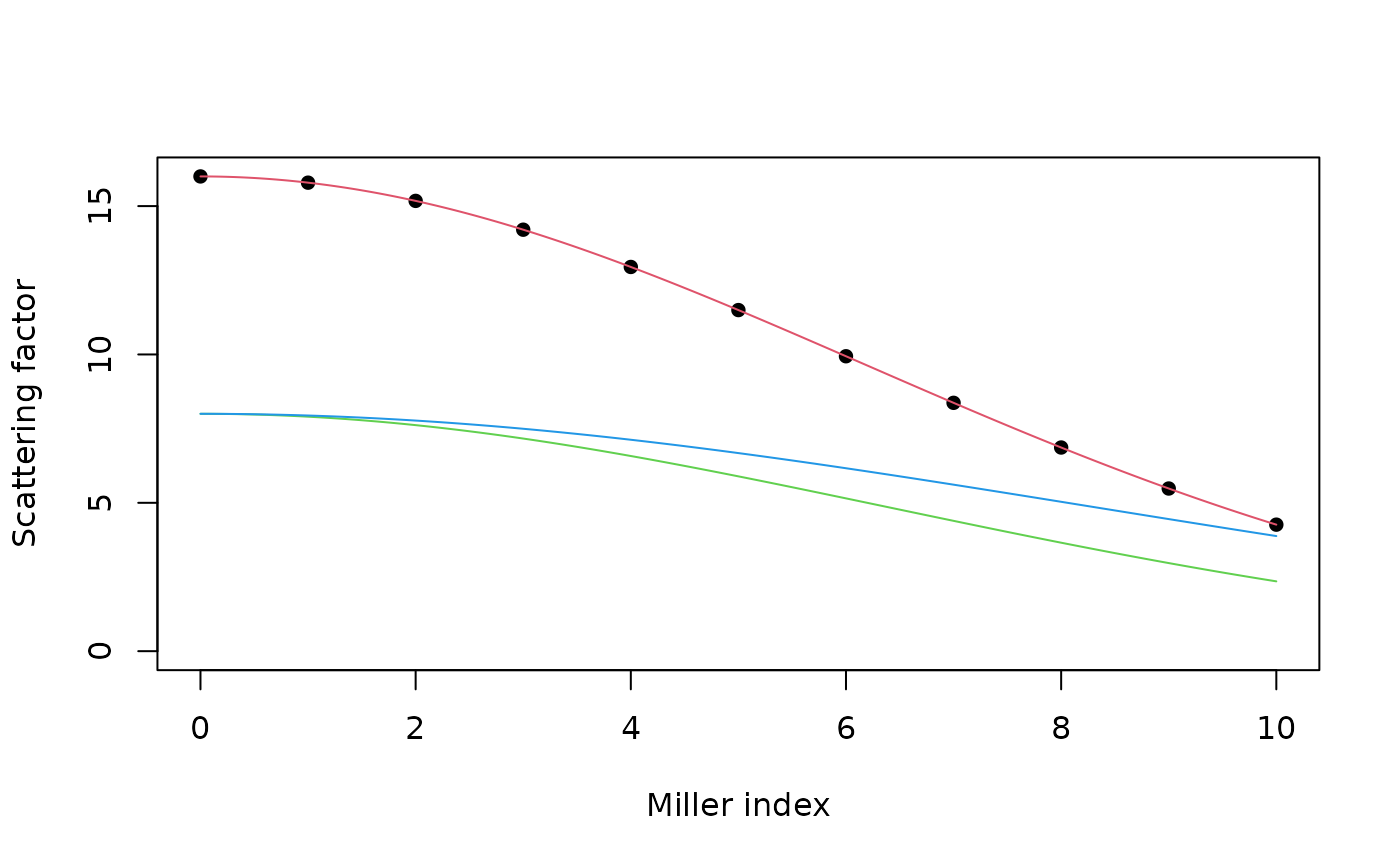Scattering factor for 1D gaussian atoms
scafac.RdGiven unit cell length, atomic number, B factor, occupancy and Miller index h, this function returns the corresponding value of the analytical scattering factor calculated as Fourier transform of the 1D gaussian atom.
Arguments
- h
Real numeric. One or more 1D Miller indices. h can also have non-integer values in between integer values. This enables plotting of scattering curves.
- a
Real numeric. Length of 1D unit cell.
- Zj
Integer numeric. Atomic number (e.g. Oxygen has Zj <- 8)
- occj
Real numeric. Atomic occupancy, a real number between 0 and 1, where 0 means that the atom is missing in the crystal and 1 means that is present in all unit cells of the crystal.
- Bj
Real numeric. This is the B factor associated with the thermal vibration of the atom. It is measured in squared angstroms and it is equal to 8*pi^2*sigma^2, where sigma is the gaussian atom width.
- k
A real number. It controls the standard deviation of the gaussian function describing the atom and, thus, the shape of the associated peak. The standard deviation sigma is given by:
sigma = k * sqrt(Z)
Value
A real numeric. The value of the scattering factor at the sprcified Miller idex or corresponding real value.
Examples
# Values for some Miller indices
h <- 0:10
a <- 20
Zj <- 16
Bj <- 18 # Roughly corresponding to sigma 0.23
occj <- 1
fval <- scafac(h,a,Zj,occj,Bj)
plot(h,fval,pch=16,xlab="Miller index",ylab="Scattering factor",
ylim=c(0,16))
# Continuous resolution
h <- seq(0,10,length=1000)
fval <- scafac(h,a,Zj,occj,Bj)
points(h,fval,type="l",col=2)
# Scattering curve for a lighter atom
Zj <- 8
fval <- scafac(h,a,Zj,occj,Bj)
points(h,fval,type="l",col=3)
# Scattering curve for the same atom, just with smaller Bj (colder)
Bj <- 10
fval <- scafac(h,a,Zj,occj,Bj)
points(h,fval,type="l",col=4)
